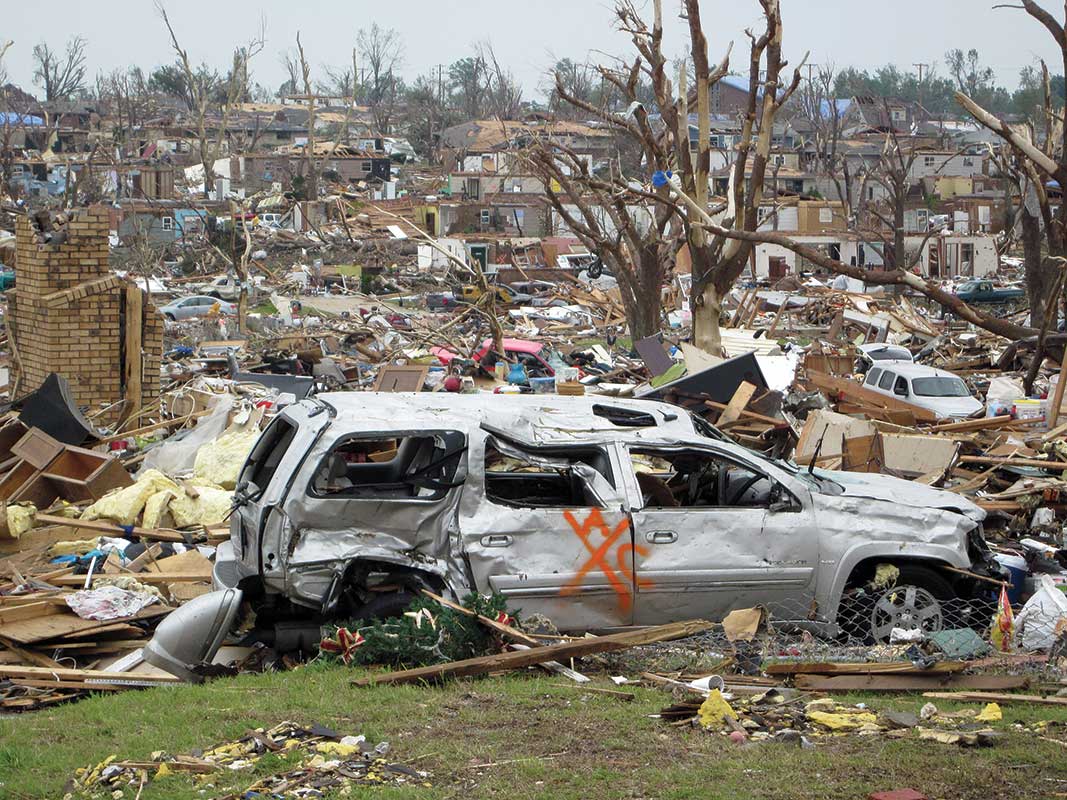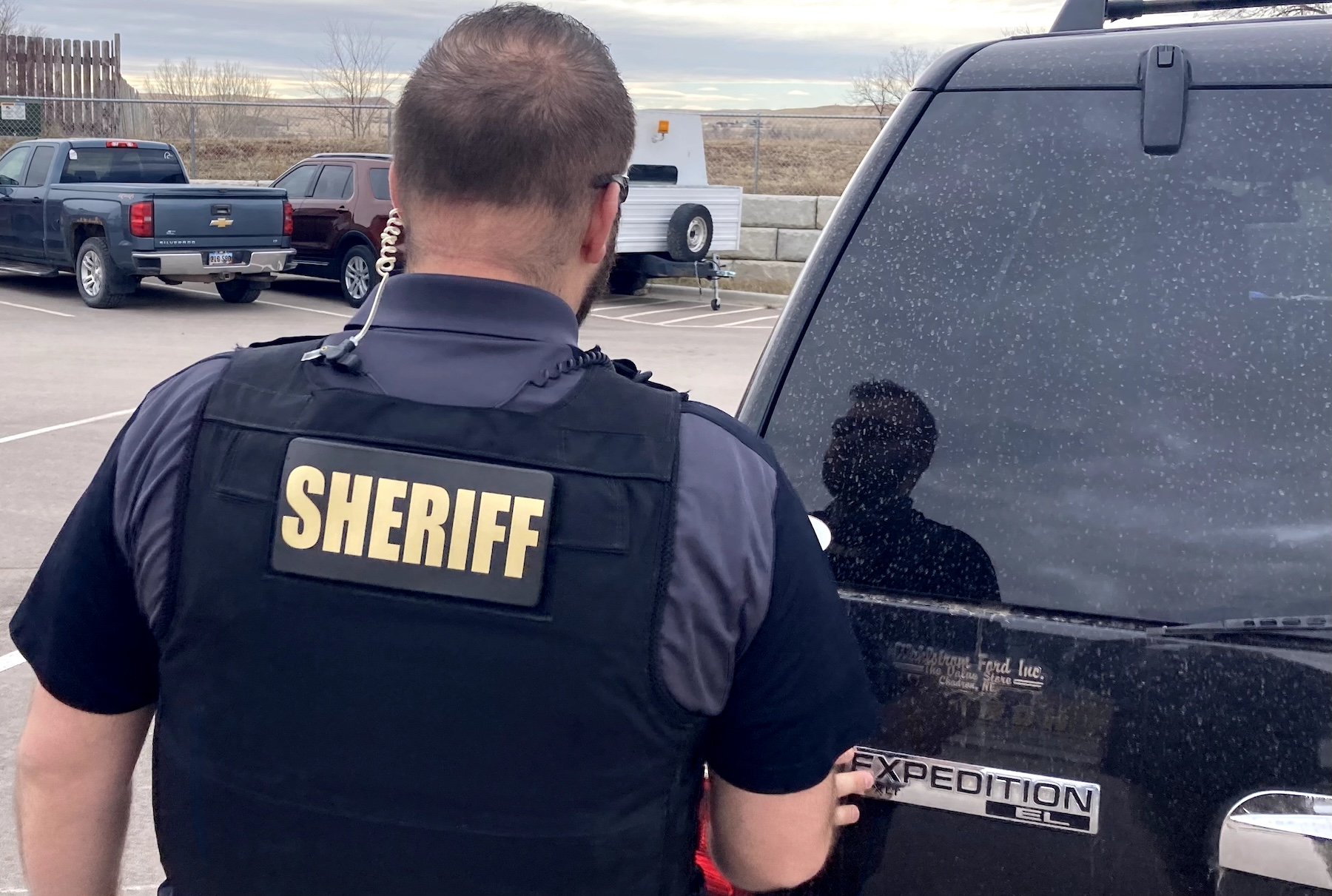
ACJF12_1_1-800
Could this be your patrol area “the day after”? Just ask any cop who’s lived through it.
On Aug. 27, 2011, Hurricane Irene made landfall over North Carolina’s Outer Banks and began a trail of destruction stretching all the way to Canada’s eastern seaboard. Irene impacted almost 100 million people, with over 50 million suffering the brunt of her effects. Tens of millions went without electric power and other utilities for days. Flood damages were catastrophic. Six states recorded 100-year flood levels; two counties hit 500-year flood levels. Hurricane-spawned tornadoes ranged from the Carolinas to upstate New York. Although damage estimates are in the tens of billions of dollars and still being totaled, the death toll was mercifully low. As terrible as the effects were, we dodged a big bullet.
Irene had been a Category 3 hurricane, but dropped down to a Category 1 before skirting Florida, Georgia and much of South Carolina before then hitting North Carolina and Virginia. It skipped back out to sea, making landfall again at Little Egg Inlet, N.J. Irene had been downgraded to tropical storm status by the time it hit Coney Island. Imagine if it had remained a 140 mph Category 3 and hugged the coastline …
Meanwhile in drought-parched Texas, a wildfire season recording 22,790 separate blazes spun up into cataclysmic fi res, which burned 2,718 homes and almost 4 million acres, including 1,939 homes over the Labor Day weekend alone. Tens of thousands were evacuated.
The Texas fi re scene was repeated on a smaller but still devastating scale in California’s Sierra Nevada and Central Valley.
Then just before 1600 on September 8, electric power suddenly went off throughout the nation’s eighth largest city, San Diego, and all across the southern part of the state into Arizona and northern Mexico. Traffic lights, gas pumps and virtually everything except generator-powered emergency services for 5 million people went down for over 15 hours causing chaos. It was 85 degrees F at the time in San Diego, but 111 degrees F in Palm Springs and 115 in the Imperial Valley, when everything including the AC died.
All this happened in a span of 13 days. Could it have been worse? Yes, far worse.
ARE YOU PREPARED?
If you weren’t affected by these events, first be thankful, and second gather all the info you can about law enforcements’ challenges and lessons learned from these events. Lots of information is already rolling out. Make phone calls and talk to your fellow sergeants from agencies large and small impacted by flood, fi re and loss of services.
Many small towns like Killington and Pittsfield in Vermont were completely cut off for up to two weeks. What might you learn from their officers? Atlantic City dealt with the first mandatory evacuation in its history. What did their cops learn from that experience? Virginia Beach escaped major damage, but it’s one of the best hurricane-prepared cities on the East Coast, with an excellent emergency information program other jurisdictions could learn a great deal from — and the better informed the residents are, the fewer problems they create for law enforcement.
“The Better Informed The Residents Are, The Fewer
Problems They Create For Law Enforcement. ”
If you were directly involved in September’s events, don’t just put all that behind you and move on. Make copies of the most informative after-action reports generated by your agency, complete with planned changes to procedures, training and equipment. Add your own observations and notes. Take copies with you to every out-of-area seminar and school you attend and pass them out, talk them up; share what you’ve learned and learn from other attendees.
BEST IS OFTEN THE SMALLEST
Often anecdotal information can be extremely valuable. From past disasters and emergency incidents, here are some selections:
“Every station should have a couple chainsaws and every officer should know how to use them. Big, downed trees blocked critical streets and Public Works just couldn’t keep up.”
“We were pretty well equipped for everything except tearing through wreckage to pull out victims. You need heavy gloves and a crowbar, maybe a big shovel and some rope in every vehicle.”
“No gas pumps were working in the whole county and our cars were running dry. We didn’t know there were two big sources of gravity-fed gasoline until the emergency was over.”
An agency formed from the merger of a county sheriff’s office and a half-dozen smaller departments hadn’t made it clear to officers that in the event of a disaster and no phone service, should off-duty personnel report to their assigned stations or to the nearest station? That created confusion and needless delays.
“We never dreamed we would ever need stable, shallow draft boats — and skilled operators of them — to pull citizens off flooded buildings. Thankfully, the Fish & Game guys showed up from all over with their boats, without being called. I keep them on speed dial now.”
“A couple pairs of cheap goggles and a box of dust masks would have made a huge difference. We could hardly breathe and were almost blinded.”
One more question to ask yourself: Is your family thoroughly and completely prepared to get along without you — and without utilities or outside support — for three or more days? Preparedness starts in your head, and at home.














